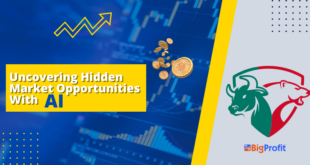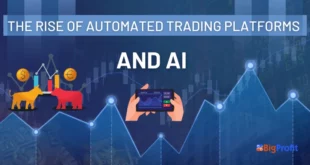Stock trading bots that utilize machine learning techniques can increase profits by adapting to market changes quickly. This is achieved using supervised learning algorithms which analyze historical data and detect patterns.
Reinforcement learning takes a unique approach by exploring an environment through trial-and-error while receiving immediate feedback in the form of reward signals.
How It Works
Reinforcement learning is a form of machine learning that allows agents to make decisions and learn from the environment on their own. It is ideal for decision-making problems where no existing model exists, such as programming robots or automatically executing stock trading strategies.
Reinforcement learning works because agents are rewarded and penalized according to the outcome of their actions, creating an incremental process where short-term rewards lead to long-term gains.
Reward-driven learning (RL) includes four essential elements: the agent, reward signal, value function and model of environment. An agent makes decisions on which action to take next which affect the future state of their environment – with each iteration’s reward optimized as best possible (in financial and trading this means making maximum profit from each buy and sell transaction).
Optimal Decision Making
Optimal decision making involves the ability to identify the ideal action in any given circumstance, typically using an idealized decision maker who is both informed and accurate with computing calculations. Reinforcement learning technology has proven itself useful across various fields and applications such as finance and trading.
Reinforcement learning-powered stock trading bots utilize trial and error to optimize their behavior and learn from their environment. They may either operate under approval from human traders, or can function completely autonomously.
Reinforcement learning methods are ideal for quantitative stock trading strategies because they allow traders to train them to make optimal decisions by optimizing reward values. One study identified the anterior cingulate cortex (ACC) as being essential in using reinforcement information as guidance for behavior; lesions to this region impaired monkeys’ ability to take corrective actions following mistakes made when undertaking reinforcement-guided choice tasks.
Optimal Trade Execution
Building a trading strategy can be challenging, but even more so designing an automated trading system capable of making trades at precisely the right moment to maximize profit. Reward learning offers us hope of creating such an automated trading system.
Reinforcement learning has been used to create systems capable of autonomous driving, job scheduling and even outwitting human experts at complex strategy games like chess and backgammon. Reinforcement learning algorithms analyze their environments before making decisions based on how the environment responds to them.
Deep reinforcement learning can also assist in optimizing trade execution, as demonstrated by the StockRecommendSystem project. Using GRU-based agents to extract informative financial features that represent the intrinsic characteristics of stocks, it determines their likelihood of reaching specific price thresholds and decides whether or not short selling or long buying strategies should be applied accordingly.
Deep Learning
Reinforcement learning is a type of machine learning that specializes in creating algorithms to learn through trial-and-error to maximize rewards, such as autonomous driving, robotics and game playing applications where its performance exceeds human capabilities.
Reinforcement learning can be used to teach robots how to best complete tasks in dynamic environments, like an automobile manufacturing robot that must know how to select and place parts, while master chess players know how to respond quickly to opponent moves.
Reinforcement learning allows robots to discover how to complete a task with maximum rewards by trying various actions and observing their effects. This approach allows businesses to optimize and control complex workflows more easily; for example eCommerce platforms could leverage it for revenue optimization, fraud prevention, customer experience personalization enhancement as well as energy consumption optimisation. Data centers could also utilize it to optimize server temperature control and energy consumption.
 BigProfit Profit through Algo & Technical Trading
BigProfit Profit through Algo & Technical Trading




